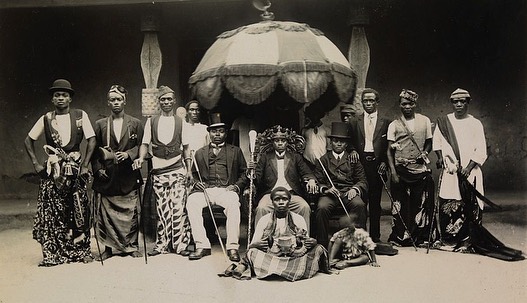The Itsekiri ethnic group, also known as Jekri, Isekiri or Ishekiri, inhabits the westernmost part of the Niger Delta in southern Nigeria. The Itekiri make up the majority of the modern towns of Sapele, Warri, Burutu and Forcados.
Itekiri is also a subgroup of the Yoruboid people who live mainly in the Warri South, Uvwie, Warri North and Warri Southwest local government areas of Delta State on the Atlantic coast of Nigeria. This means that the Yoruba people of southwestern Nigeria, as well as the Okpe and Edo peoples, are relatives of the Itsekiri. In addition, there are large Itekiri communities in many Nigerian cities, including Lagos, Sapele, Benin City, Port Harcourt and Abuja, as well as parts of Edo and Ondo states. Research also shows that the Itsekiri also like to think of themselves as part of the Warri Kingdom, also known as “in their own language”.

The Itsekiri Monarchy still exists today, with Ogiame Olu Atuwatse III as the current head of state. The monarch’s main palace is located in Warri City, the region’s largest city and home to many other communities, including the Urhobos, Ijaws, Isoko and many other Nigerian and expatriate groups involved in the oil and gas industry. Ode-Itsekiri, also known as “Great Warri” or “Ale Iwerre”, is the historical capital of the Itsekiri people.
Origin myths say Ginuwa, the first Olu (king) of the Itekiri, was once a prince of Benin, a descendant of all subsequent monarchs of both Benin. The Olu received advice from a council of minor chiefs.However, the history of the itsekiri people dates back to the 15th century when the Itekiri had a hot-headed and strong-willed young man, Prince Iginuwa, whom they knew as Ginuwa. Prince Iginuwa was the eldest son of Oba Olua, the fourteenth Oba of the Bini Kingdom (Benin). He was revered by his father, the monarch, but despised by the leaders because he did not like to adhere to the taboos and customs of the time.

Prince Iginuwa led gangs of fellow hot heads and started a frequent campaign of terror against the chiefs and their supporters because he was unwilling to wait for his time as an oba to come before doing away with what he thought to be wrong. As a result, the chief minister presided over a private gathering of the irritated chiefs who already harboured animosity toward him; the name of the chief was Iyase.
Later, history has it that a consensus was reached during the meeting with the chiefs for the young Prince to be eliminated. However, it is part of the custom that, especially in the Bini kingdom, the son who was chosen as the Edaiken, known to them as the crowned prince, is to live among the hereditary chiefs where his rank belonged.
Due to this, the young prince’s campaign could be carried out without the interference of his father, Oba Olua.Therefore the choice of chefs is similar. Oba Olu, however, turned to his Chief Priest Ogiefa for advice on what he could do to save his son’s life when he learned of the secret consequences of what was likely to happen to him. Oba Olua’s deliberations with the priest resulted in a response from his oracle in which the Oba realized that it was necessary to find an innovative way to expel the prince from the kingdom as quickly as possible.
Without further ado, Oba Olua ordered the rapid construction of an “Iroko wooden arch” large enough to accommodate both the prince and the 70 eldest sons of the Bini chiefs. After the construction of the Ark was completed, the Central Council was convened to carry out this task. Oba Olua told the chiefs that he was sending Prince Iginuwa to perform rituals for the river goddess Olokun and that he needed her first sons to accompany him.

